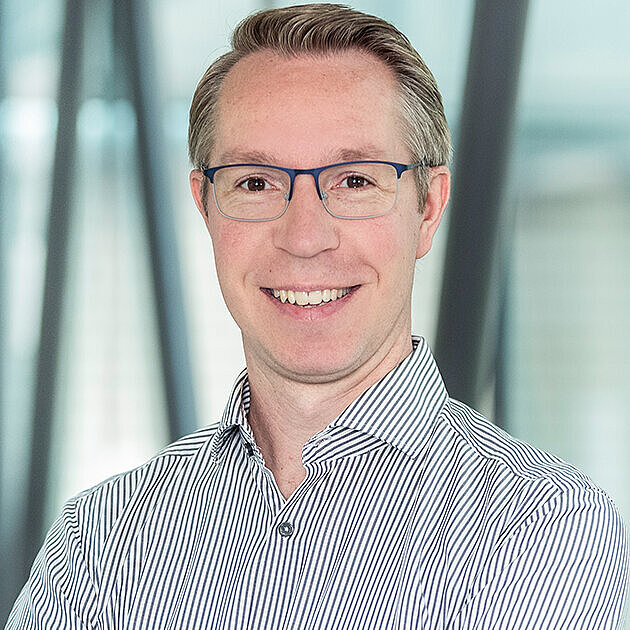His post-doctoral work took Christian Sieben to Switzerland. With a scholarship and his own project in hand, he moved to the physics department of the EPFL in Lausanne. There, Sieben remained true to virus research, but also worked on projects with a technical focus: “For example, we developed a method allowing us to visualise large multi-protein complexes. To this end, we combined concepts from electron microscopy with super-resolution imaging - I still do that today!”
![[Translate to English:] Christian Sieben - Ein Biologe mit Nanoblick Christian Sieben](/fileadmin/_processed_/4/7/csm_Portraitbild_Portrait_C_Sieben_31be4a5ac0.jpg)
A Biologist with Nano Vision
Between super-microscope and piles of files
Christian Sieben joined the Helmholtz Centre for Infection Research (HZI) in Braunschweig in 2020 via the Helmholtz Association's Young Investigator Group Programme: “I don‘t fit into any pigeonhole thematically, I‘m neither a virologist nor a classical biophysicist. This made the independent fellowship ideal.” In terms of topic, Sieben picked up where he left off with his research from his doctoral days. While the issue then was how a virus enters the cell, it is now all about the functional aspects: How does the virus transmit signals into the cell? How does the cell interpret these signals? Does the cell already send signals to the immune system? These questions are to be answered at the level of molecular mechanisms, through microscopy and the quantitative analysis of the data it obtains. In the future, this basic research may lead to antiviral agents, as just one example - the first collaborations in this direction are already ongoing. “Our main concern, however, is to understand the biology underlying the interaction between virus and host cell,” says Sieben.
One challenge for Christian Sieben arises from some missing expertise in special fields of cell biology or virology, which he has only touched on in his career to date. “That‘s where the interactive environment here at the centre, the willingness to cooperate and the infrastructure come in handy. There is an enormous amount of expertise in areas in which I am not well versed. I can just meet with an expert on a very specific topic during the lunch break - that‘s very cool.”
His role as group leader also presents Sieben with new challenges: management and administration. There is a learning curve and it takes time. At the same time, Christian Sieben needs and wants to stay in the lab. He wants to pass on his special know-how to his doctoral students - and the scientist in Sieben really enjoys his time in the lab anyway, especially as it is becoming increasingly scarce: “Unfortunately, office work is keeping me from focussing fully on science to an increasing degree.”
With all the new and old commitments, Christian Sieben nevertheless takes as much time for his family as he can. The biologist likes to take trips with his son and wife. On his 40th birthday just a few months ago, he completed his first marathon - so Christian Sieben can impress with drive and stamina.
Author: Paul Grumer
Published: Oktober 2022
